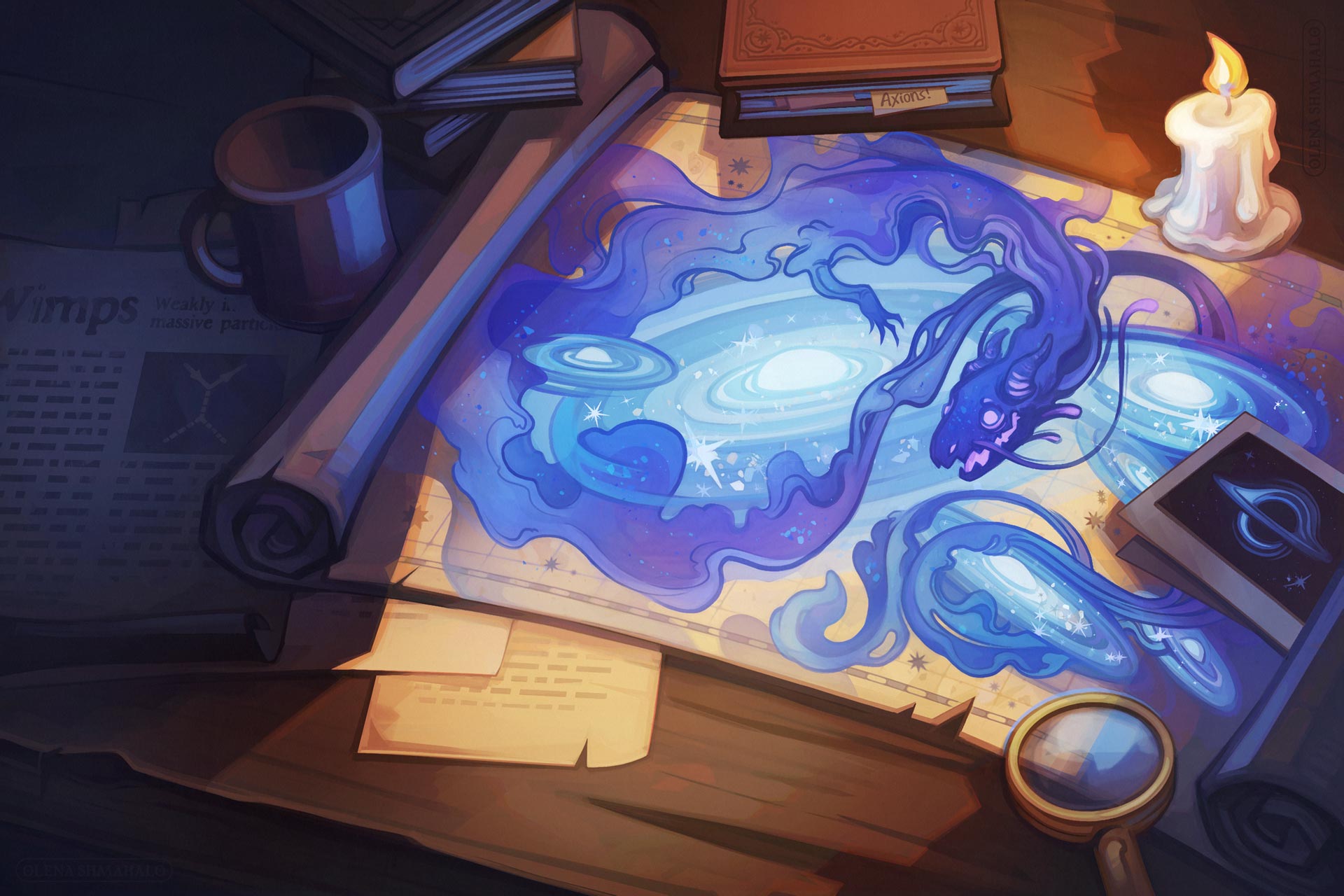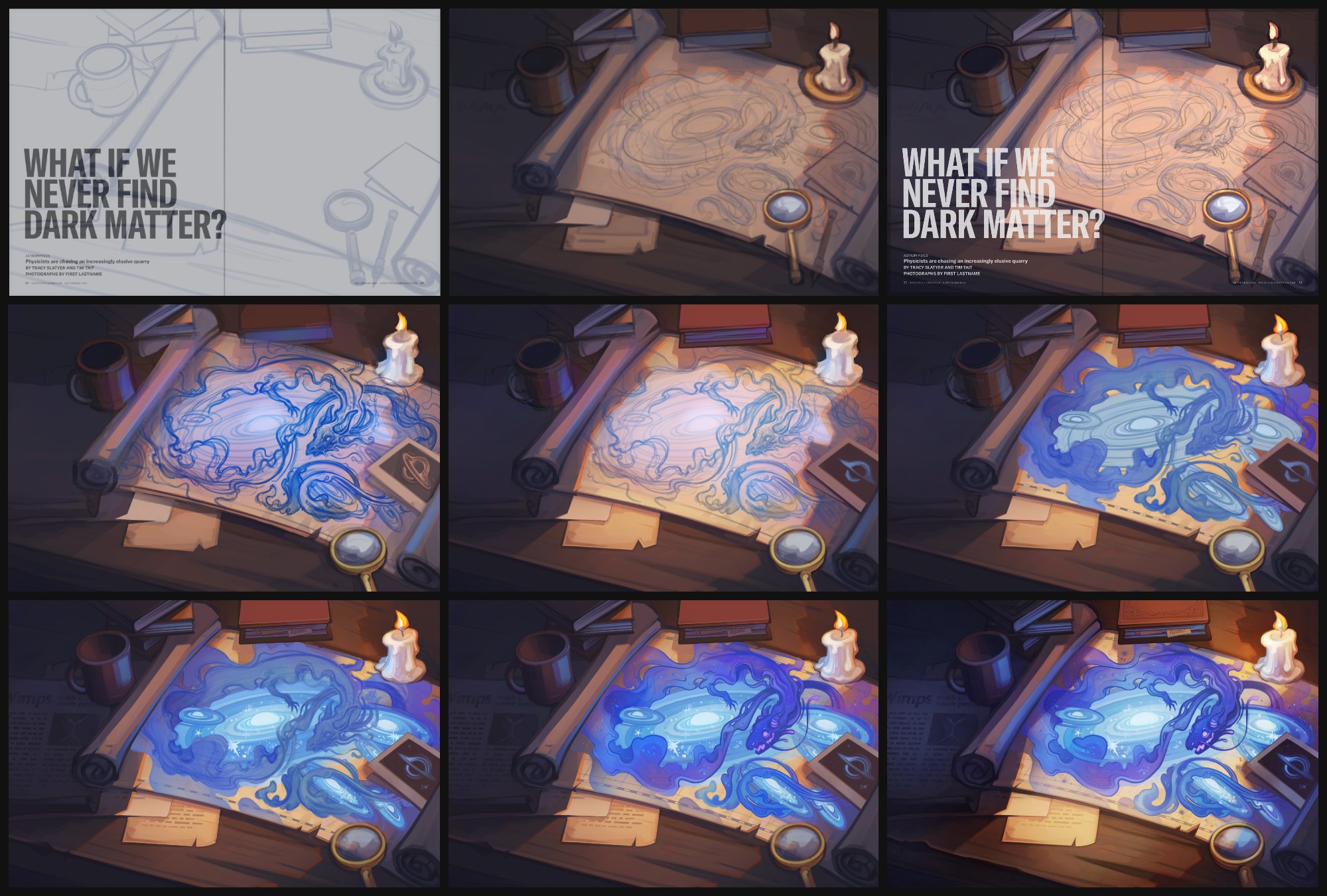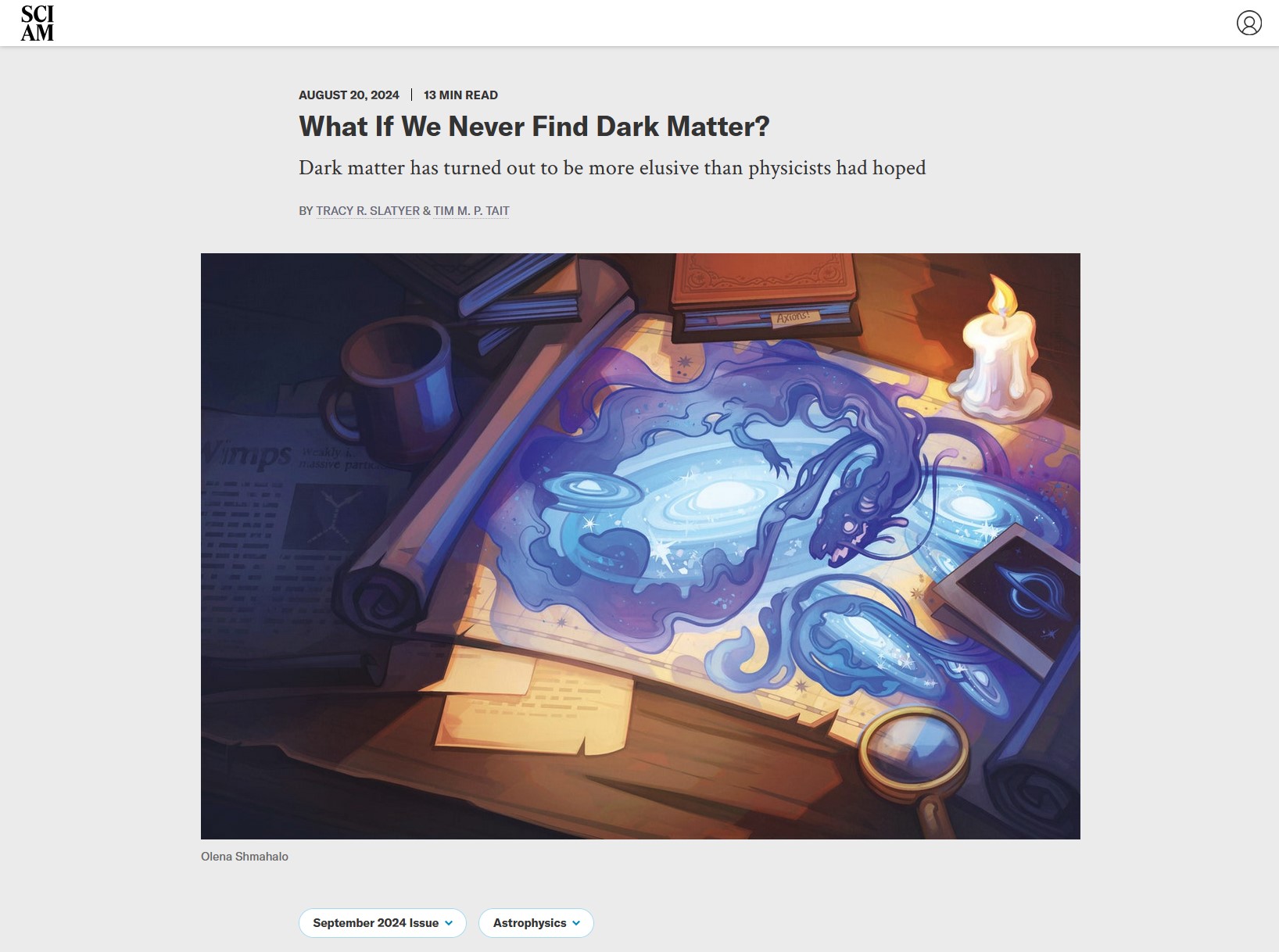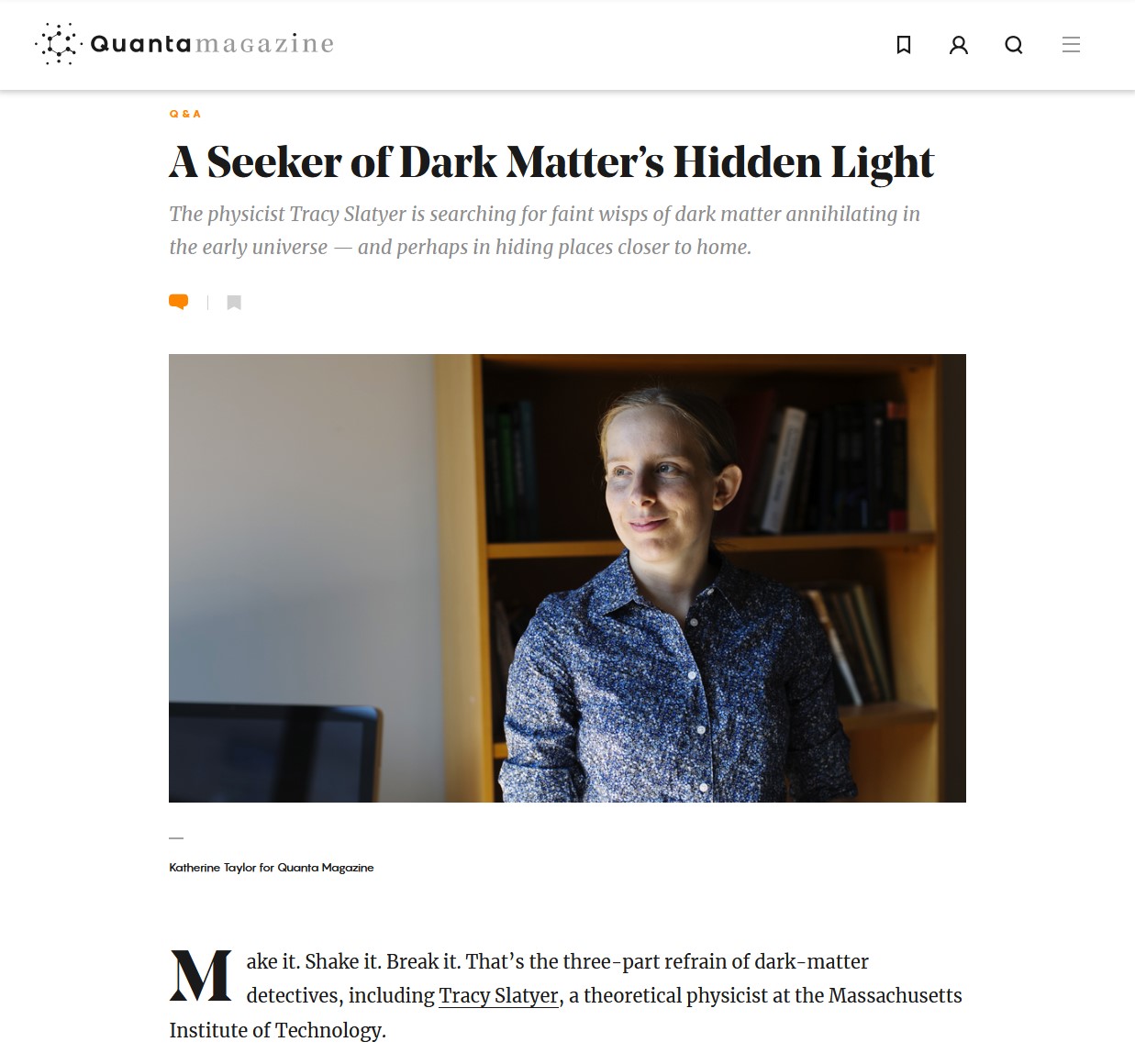Here be (Dark Matter) Monsters!
Editorial Science Illustration • Scientific American • 2024
FOR
Scientific American, 2024
Thanks to CD Michael Mrak
WORK
Concepts, illustration
TOOLS
CSP, Procreate
INFO
Inspired by antique nautical maps depicting monsters in unknown waters (here be dragons), this celestial map shows dark matter styled as a draconic serpent wrapping around galaxies. (Dark matter is like a gravitational glue that binds galaxy clusters together, while dark energy pushes them apart.) Imagery and labels on the objects around the map suggest dark matter candidates like axions, WIMPs and black holes.
For a Scientific American article by Tracy R. Slatyer & Tim M. P. Tait: What If We Never Find Dark Matter?
WIP Screenshots
Note that the composition here differs drastically from the thumbnail sketches, which just serve to show concepts and get approval as quickly as possible. I typically include moodboards alongside those thumbs to give clients a better idea of the artwork's intended direction. (Likewise when art-directing, I often give artists references for scientific accuracy, specs, or style.)
Once a concept is chosen, everything thereafter is done with careful consideration of the final layout and other goals the image must meet.
Screenshot of the article on ScientificAmerican.com
© Olena Shmahalo




